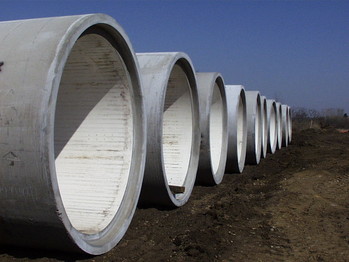Interceptor system
 Wastewater conveyance is the phrase we use to describe how wastewater is collected from homes, businesses, schools, industries, and other properties and moved away from those places to a wastewater treatment facility, where the water is cleaned and returned to the environment. Moving wastewater away from homes and businesses and cleaning it helps protect public health and the environment.
Wastewater conveyance is the phrase we use to describe how wastewater is collected from homes, businesses, schools, industries, and other properties and moved away from those places to a wastewater treatment facility, where the water is cleaned and returned to the environment. Moving wastewater away from homes and businesses and cleaning it helps protect public health and the environment.
Properties have individual wastewater service connections (also called private service laterals) to local community wastewater collection systems in the streets. The local community collection systems connect to the Metropolitan Council Environmental Services regional interceptor system. The Met Council interceptor system conveys the wastewater flows to one of nine regional wastewater treatment plants. The interceptor sewers range in size up to 14 feet in diameter.
Our regional wastewater conveyance system is comprised of over 650 miles of pipelines, 60 lift stations, 24 rain gauges, and over 220 metering sites. In addition to operating and maintaining this system, Met Council manages an inflow and infiltration program as part of the Water Resources Management Policy Plan.
Maintaining and operating the interceptor system
Met Council relies on a scheduled, preventative maintenance program to keep wastewater flow moving through the interceptor system.
We inspect pipe with closed-circuit television (CCTV) and clean the pipes, maintenance and access structures, and wet wells of lift stations. Cleaning removes common debris as well as items that should not be flushed or dumped down a drain like rags, wipes, and grease. We also replace over 300,000 pounds of odor control media per year throughout the region as part of our commitment to be a good neighbor.
We also install, maintain, and periodically verify our flow meters. We use flow meters to measure system performance, and the data is used to determine community billing rates. Reliable meters help us maintain affordable rates for wastewater conveyance and treatment throughout the region.
Reporting spills and odors
Even well-maintained systems experience wastewater spills. Though spills are very rare, it is important that they are reported to Met Council immediately. We will act quickly to resolve and remediate wastewater spills to continue to provide public health and environmental protection.
Odor Control Hotline: 651-602-4511
Inflow and infiltration
Inflow and infiltration is clear water that enters the coneyance system from a variety of sources. Infiltration occurs when groundwater seeps into sewer pipes through cracks, leaky pipe joints, and/or deteriorated manholes. Inflow occurs through rainfall/stormwater that enters the wastewater system. More about inflow and infiltration (I/I).
Interceptor permits
Connection permits: Developers and communities who will be making a direct connection to Met Council interceptor facilities must complete a connection permit application in addition to any required sanitary sewer extension permits. Developers must work with the municipality where the project is located to submit the connection permit application. Additional information about the connection permit application is available on the application.
Encroachment agreements: Work over and in Metropolitan Council Environmental Services easements is only allowed with permission from Met Council. Encroachment agreements may be required for projects that impact Met Council easements, even if no direct connection to Met Council sewers is involved. Additional information about encroachment agreements is available on the agreement application.
Met Council interceptor sewer planning and construction projects
The following information includes current Met Council interceptor sewer projects.
For additional information, please refer to one of the following
Met Council Interceptor Services contacts.